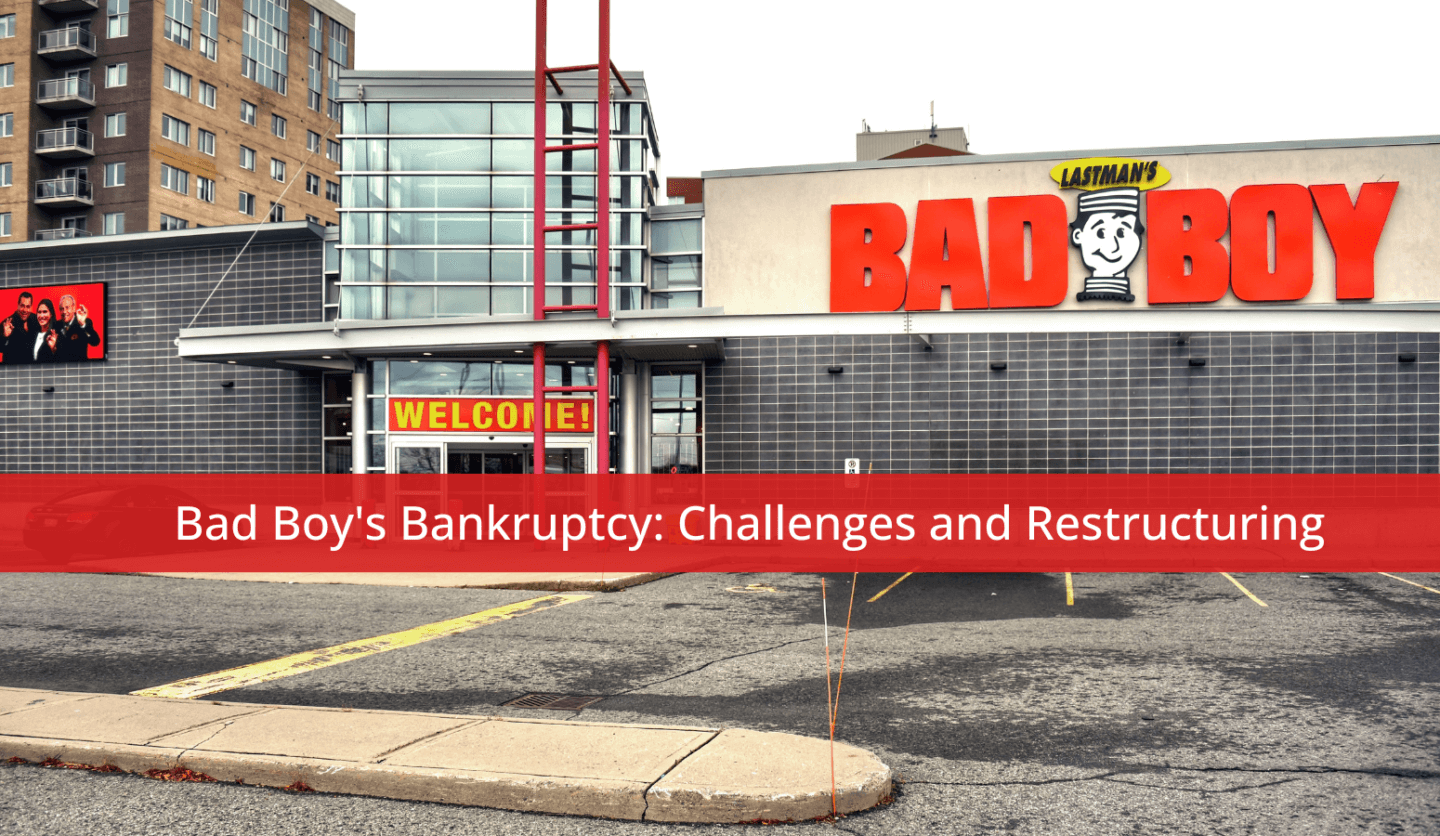
Bad Boy’s Bankruptcy: Challenges and Restructuring
All about Bad Boy’s Bankruptcy
Bad Boy Furniture Warehouse Ltd. has received the green light from an Ontario court to initiate the liquidation process as part of its ongoing business restructuring efforts. In a court order issued by Judge Herman Wilton-Siegel on November 17, the Pickering, Ontario-based furniture company, renowned for its distinctive advertising claiming unbeatable prices, can now commence the sale of its inventory.
According to documents filed with the Superior Court of Justice, the initial phase of liquidation will take place at the brand’s 12 stores located in southern Ontario during the first 30 days. Subsequently, some stores will undergo closure and consolidation, while others will continue operations. The court order stipulates that the liquidation sales must conclude across the entire company network by February 15.
How Is Bad Boy Responding to Economic Challenges & Bankruptcy?
The decision to liquidate comes at a challenging time for the company, founded by former Toronto mayor Mel Lastman in the 1950s and later revived by his son Blayne Lastman in the early 1990s. Bad Boy Furniture acknowledges operating in a difficult economic environment marked by high interest rates, dwindling sales in the housing sector, and a challenging retail climate.
To navigate these financial challenges, Bad Boy has initiated a restructuring process under the Bankruptcy and Insolvency Act through a notice of intention filing on November 10. This legal avenue allows companies facing financial difficulties to reorganize their operations in a financially prudent manner. Typically, businesses present a proposal to the court to avoid bankruptcy while providing creditors with some compensation for amounts owed.
Initially granted until December 9 to submit a proposal, Bad Boy obtained an extension from Wilton-Siegel, extending the deadline to January 23. KSV Restructuring Inc., engaged by Bad Boy to facilitate the reorganization, has cautioned that further extensions may be sought, as the liquidation sales might conclude after the proposal deadline.
How have employees been affected during the restructuring?
Recent documents indicating the extension reveal that since the original filings, 20 of Bad Boy’s 275 employees have lost their jobs, primarily from the company’s head office and warehouse. The filings also highlight the likelihood of substantial additional employee terminations in connection with store closures, occurring during and following the 30-day initial sale period.
Bad Boy’s unsecured debts to creditors amount to $13.7 million, including $2.3 million to Whirlpool Canada LP, $840,924 to Samsung Appliances, $404,410 to LG Electronics Canada Inc., and $317,382 to RioCan Real Estate Investment Trust. Additionally, the company holds $4.5 million in deposits from customers for undelivered furniture, with customers advised to contact their credit card providers for refunds.
How can Whitten & Lublin help?
Bankruptcy does not excuse employers from paying severance and unpaid wages owed to employees. However, the reality may be very unpleasant for employees in these circumstances. An employee becomes an unsecured creditor to its bankrupt employer, and must get in line behind other creditors, such as taxes owed to the government and debts held by secured creditors like banks, who are also needing to be paid and as secured creditors will be paid first.
If you or someone you know is dealing with a bankrupt employer, it is important to speak with an experienced employment lawyer to understand your workplace rights. The employment lawyers at Whitten & Lublin can help you navigate your legal options regarding your specific circumstances. If you are looking for employment lawyers and would like more information about what Whitten & Lublin can do for you, please contact us online or by phone at (416) 640-2667.



